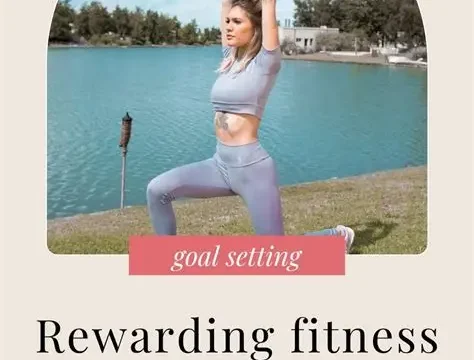When most people think of fitness goals, their minds often jump straight to numbers. Whether it’s a target weight, a certain number of push-ups, or running a mile in a set time, goals are often tied to results. While there’s nothing wrong with being driven by achievement, it’s equally important—if not more so—to create goals that feel good along the way. Fitness isn’t just about the finish line. It’s about how the journey makes you feel, day by day.
The most sustainable and rewarding fitness routines begin with goals that are not only healthy but enjoyable. When you genuinely look forward to your workouts or wellness habits, they stop feeling like a chore. They become something you do because they add value to your life, improve your mood, and help you feel more connected to your body.
To create fitness goals that you’ll enjoy, it’s helpful to start by reflecting on what movement already feels good to you. Think back to childhood or times when you were most active. Were you someone who loved to dance? Did you enjoy playing sports with friends or taking long walks? Reconnecting with activities you naturally gravitate toward is a great way to build joy into your fitness journey.
Enjoyment also comes from variety. Many people lose interest in fitness when they do the same activity over and over. Instead of sticking to a single type of workout, consider setting a goal that invites flexibility. For example, you might aim to move your body four times a week but leave room for different activities. Some days might include yoga, others could involve swimming or biking, and some might be as simple as walking while listening to a favorite podcast.
Another way to ensure your goals are enjoyable is to make them feel achievable. If a goal feels too far out of reach, it can become discouraging rather than motivating. Instead of setting goals based on pressure or comparison, focus on what’s realistic for your current lifestyle. A healthy fitness goal might be to stretch for five minutes every morning, take the stairs more often, or go outside for fresh air once a day. These small, simple commitments can create powerful shifts over time.
It’s also helpful to frame your goals around how you want to feel rather than how you want to look. While physical changes may happen naturally with regular movement, focusing solely on appearance can make the process feel restrictive or stressful. Consider setting goals like having more energy during the day, sleeping better at night, improving your posture, or feeling stronger when carrying groceries. These kinds of goals are rooted in self-care and can be more satisfying to work toward.
Setting goals with a social or emotional element can also increase your enjoyment. Moving your body doesn’t have to be a solo mission. You might find that you’re more consistent when you exercise with a friend, join a class, or participate in a walking group. Social connection adds an extra layer of fun, and being part of a supportive environment can make fitness feel more like a shared experience than a solo task.
Another enjoyable goal might involve trying something completely new. Signing up for a beginner dance class, learning to paddleboard, or exploring a nature trail you’ve never visited can bring a sense of adventure and discovery. Trying new things also helps prevent boredom and keeps your body challenged in fresh, healthy ways. By choosing a goal like trying one new activity each month, you create opportunities for growth without pressure.
Rest and recovery are often overlooked in goal setting, but they’re essential parts of a healthy routine. Enjoyable fitness means listening to your body and allowing space for rest when needed. A supportive goal could be to take one full rest day per week or to focus on quality sleep as part of your wellness plan. Honoring rest isn’t a sign of weakness—it’s a sign of balance.
Another way to make your goals more enjoyable is to pair them with habits you already love. If you’re a music lover, create a playlist that energizes you for a walk or home workout. If you enjoy nature, plan your movement outdoors whenever possible. If you love journaling, keep track of your fitness journey in a notebook where you can jot down how you feel, what you’re proud of, or what you’d like to try next. These small touches help weave fitness into your life in ways that feel personal and inspiring.
Goals are more fun when they come with encouragement instead of criticism. Rather than focusing on what you didn’t do, celebrate what you did accomplish. If your goal was to move three times a week and you did it twice, recognize that as progress. Consistency doesn’t mean perfection. It means showing up regularly, adjusting when needed, and staying committed to your well-being.
It can also be motivating to track your wins—not just the measurable ones, but the emotional ones, too. Maybe you noticed that after a walk you felt less anxious. Maybe a short workout helped you feel more focused or creative. These non-physical benefits are just as important as any milestone, and they help reinforce why your goals matter.
Your environment can also support your fitness goals in enjoyable ways. Try setting up a dedicated space at home where you can stretch, follow an online workout, or simply take a few quiet minutes to breathe. Having a space that feels welcoming and uncluttered can make your routine easier to begin and more pleasant to maintain.
Remember that your goals can and should evolve. As your interests and needs change, so can your intentions. What brings you joy today might shift over time, and that’s perfectly natural. The beauty of setting healthy fitness goals is that they can be adapted to support you through different seasons of life. Giving yourself the freedom to revise your goals helps you stay engaged and avoid burnout.
Ultimately, setting fitness goals you enjoy is about giving yourself permission to make wellness feel good. You don’t need to push through pain, punish your body, or meet anyone else’s standards. You simply need to move in ways that support your energy, uplift your mood, and fit into your real life.
Start with one small goal that sparks your interest. Maybe it’s taking a walk three times a week, signing up for a local yoga class, or dancing to your favorite song each morning. From there, build gradually and let enjoyment guide the way.
When your fitness goals bring you joy, they become something you look forward to—not something you have to force. That shift in mindset is the real foundation of a healthy, lasting routine—one where movement becomes part of how you care for yourself, connect with others, and celebrate life.





